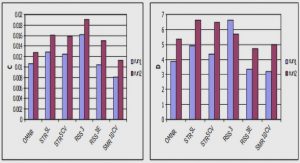Get Complete Project Material File(s) Now! »
Literature Review
The extraterritorial use of force triggers sovereignty concerns which threaten world peace and it has, therefore generated considerable interest from legal commentators. Accordingly there is no paucity of scholarly works relative to the subject matter. Rather, the literature 77 J Cook ‘Defending Israel from democracy’ The Electronic Intifada, 5 June 2007. increased radically after the 9/11 attacks in the US which ultimately stimulated a new consciousness that gave credence to the argument that armed attacks from non-state actors could trigger a response in self-defence.78 The existing literature was quite useful to this study. This study is, nevertheless, an original contribution to scholarship regarding the contemporary debate on the transformation of the law of self-defence because of its different approach. Its approach departs from the existing literature to evaluate the use of force in self-defence against NSAs in relation to causing a shift in the body of international law.
The ancient Greek and Roman Empires were among the earliest groups to make efforts to prohibit the use of force with the formalisation of security pacts and non-aggression treaties.79 Brownlie, Dinstein,80 Martin,81 McCoubrey and White82 surveyed the evolutionary history of the constraints on the use of force from the writings of ancient philosophers such as Aristotle and Cicero, and Christian theologians such as Augustine, Aquinas, Vitoria and several others. During this era, the resort to war or the use of force was founded on just cause.83 Martin even took a step further by considering national constitutional and legislative measures prohibiting the use of force, but that is outside the scope of this work.84 While the historical background they provided is relevant to this study and it is captured, the emphasis of this study is on the contemporary international law frameworks that regulate the use of force.
Certain commentators have discussed the extraterritorial use of force against NSAs through three different paradigms or legal frameworks.85 These paradigms are the ‘inter-state use of force’ which relates to the Charter framework that regulates the resort to force in the territory of other states, the law of armed conflict (LOAC) or IHL and the law enforcement framework which relates to human rights law. This study, however, dwells only on the inter-state use of force paradigm, out of the three paradigms which Melzer and Lubell examined.
In addition, in his analyses of extraterritorial use of force by states, Franck identified state sponsored terrorism, ideological subversion and the protection of citizens abroad as bases for self-defence.86 The approach of this study is, however, limited to terrorism as the sole reason for extraterritorial forcible measures. This study also subscribes to the view of some scholars that certain confrontations between some states and NSAs have not attained the threshold of an armed conflict, despite the fact that the US speaks of an international war against terrorism.
Chapter 1 Introduction
1.1. Background
1.2. Thesis Statement
1.3. Research Questions
1.4. Methodology
1.5. Literature Review
1.6. Significance of the study
1.7. Conceptualisation of terminologies
1.8. Scope and limitation of study
1.9. Overview of Chapters
Chapter 2 . International law frameworks that prohibit the threat or the use of force
2.1. Introduction
2.2. Notion of the use of force
2.3. The state of war doctrine
2.4. Evolution of the prohibition of threat or use of force
2.5. Customary law and the regulation of the use of force
2.6. Prohibition of use of force under regional normative and institutional frameworks
2.7. Conclusio
Chapter 3 Established exceptions to the general prohibition of the use of force under Article 2(4) of the UN Charter and under customary law
3.1. Introduction .
3.2. Extraterritorial use of force against non-state actors for acts of terrorism
3.3. Established exceptions to the general prohibition of the use of force
3.4. Legal limitations on the right of self-defence
3.5. Features of the right of self-defence under article
3.5. Consent of states
3.6. Conclusion .
Chapter 4 Transnational terrorism as a rationale for use of force against non-state actors.
4.1. Introduction
4.2. What transnational terrorism entails
4.3. Terrorist organisations: evolution, ideologies and violence
4.4. Obligations of states in the fight against terrorism .
4.5. Role of the UN in the fight against transnational terrorism .
4.6. Extraterritorial use of force against non-state actors while combating transnational terrorism
4.7. Factors that influence the emergence and increase in transnational terrorism
4.8. Conclusion
Chapter 5 Extraterritorial use of force against non-state actors: Israel’s perspective
Chapter 6 Extraterritorial use of force against non-state actors: United States of America’s perspective
Chapter 7 . Has the law of self-defence been transformed?: A contemporary debate
Chapter 8 Summary, recommendations and conclusion





